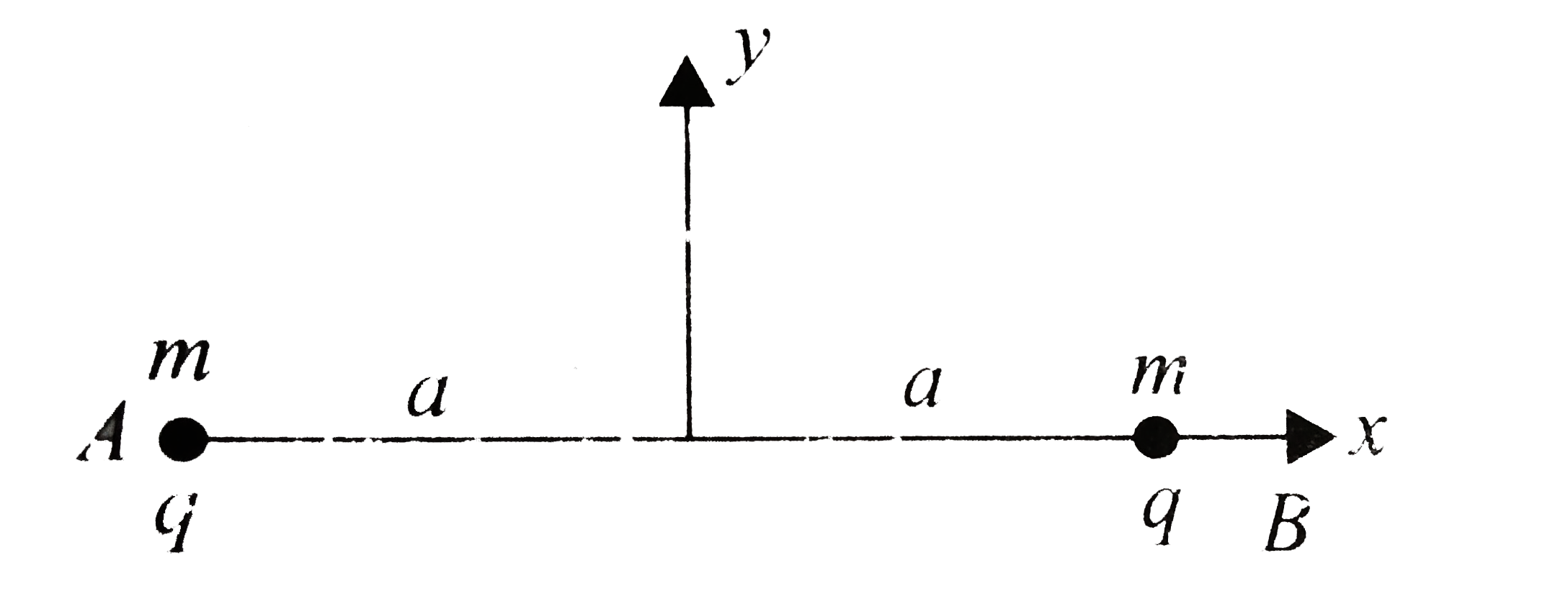A particle with charge Q coulomb, tied at the end of an inextensible string of length R metre, revolves in a vertical plane. At the centre of the circular trajectory, there is a fixed charge of magnitude Q coulomb . The mass of the moving charge M is such that Mg=Q24πɛ0R2. If at the highest position of the particle, the tension of the string just vanishes, the horizontal velocity at the lowest point has to be Solution in Marathi
0
2√gR
√2gR
√5gR
The correct Answer is:B
Step by step video & image solution for A particle with charge Q coulomb, tied at the end of an inextensible string of length R metre, revolves in a vertical plane. At the centre of the circular trajectory, there is a fixed charge of magnitude Q coulomb . The mass of the moving charge M is such that Mg=Q^2/(4pivarepsilon_0R^2). If at the highest position of the particle, the tension of the string just vanishes, the horizontal velocity at the lowest point has to be by Physics experts to help you in doubts & scoring excellent marks in Class 12 exams.
Updated on:21/07/2023Similar Questions
A thin fixed ring of radius 'R' and positive charge 'Q' is placed in a vertical plane. A particle of mass 'm' and negative charge 'q' is placed at the centre of ring. If the particle is given a small horizontal displacement, show that it executes SHM. Also find the time period of small oscillations of this particle, about the centre of ring. (Ignore gravity)
View Solutionयदि q कूलाम का आवेशित कण ,V वेग से किसी चुंबकीय क्षेत्र B में गतिशील है तब विद्युत क्षेत्र की अनुपस्थिति में आवेशित कण आरोपित चुंबकीय बल निम्न में से है ?
View SolutionA positive charge 'Q' is fixed at a point.A negatively charged particle of mass 'm' and charge q' is revolving in a circular path of radius 'r1' with 'Q' as the centre. The change in potential energy to change the radius of the circular path from r1to r2 in joule is
View SolutionA particle with charge Q coulomb, tied at the end of an inextensible string a length R meter, revolves in a vertically plane. At the centre of the circular trajectory there is a fixed charge of magnitude Q coulomb. The mass of the moving charge M is such that Mg=Q24πε0R2 if at the highest position of the partical the tnesion of the string just vanishes, the horizontal velocity at the lowest point base to the
View SolutionA charged particle of charge 'Q' is held fixed and another charged particle of mass 'm' and charge 'q' (of the same sign) is released from a distance 'r'. The impulse of the force exerted by the external agent on the fixed charge by the time distance between 'Q' and 'q' becomes 2 r is
View SolutionTwo points charges are placed on x-axis as shown, a = 1 cm, q=1μC , mass of each particle m=6g. The charges are tied at the end of an inextensible string of length 2a. The whole system is free to move on a horizontal frictionless surface.

What is the tension in the string?
View SolutionTwo points charges are placed on x-axis as shown, a = 1 cm, q = 1muC , mass of each particle m=6g . The charges are tied at the end of an inextensible string of length 2a. The whole system is free to move on a horizontal frictionless surface. Now suppose a third charge of equal value +q is fixed at the point (a//2,0) and the system of charges A and B is released. There is no friction between third charge and string. Find the maximum velocity of the system of charges A and B.
View Solution
